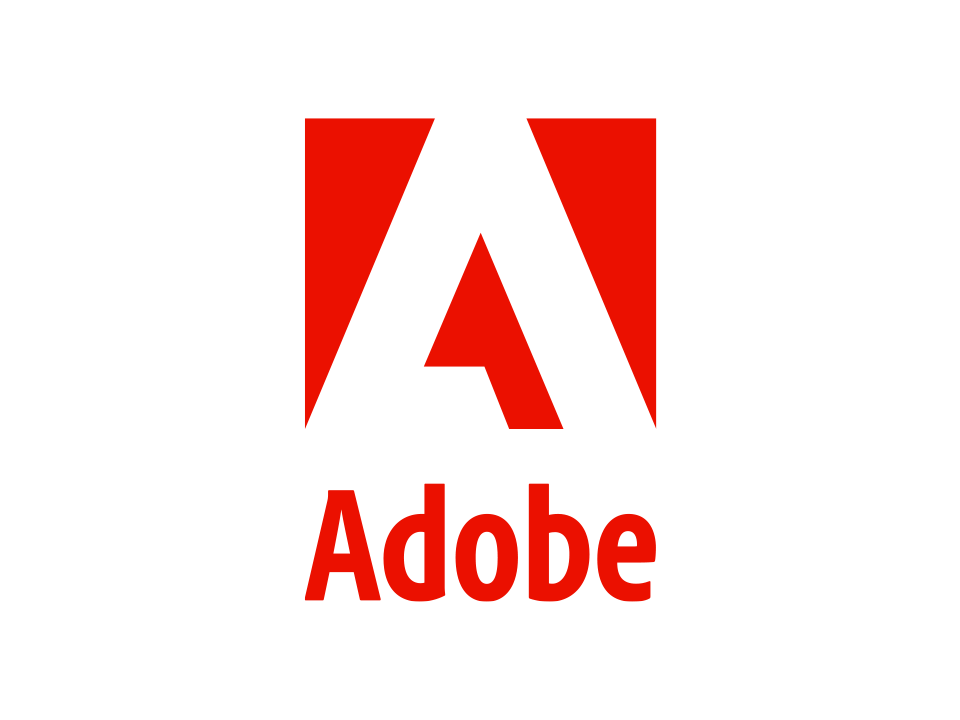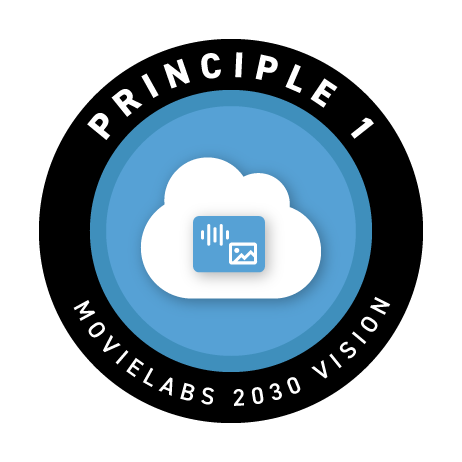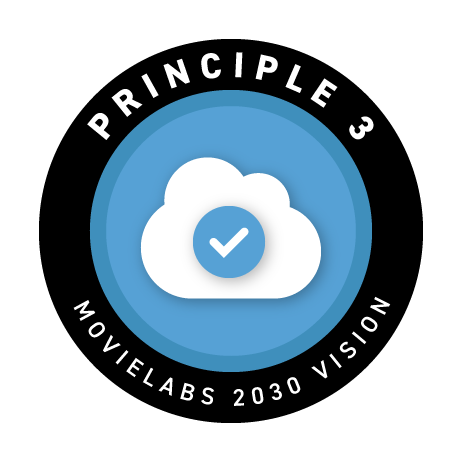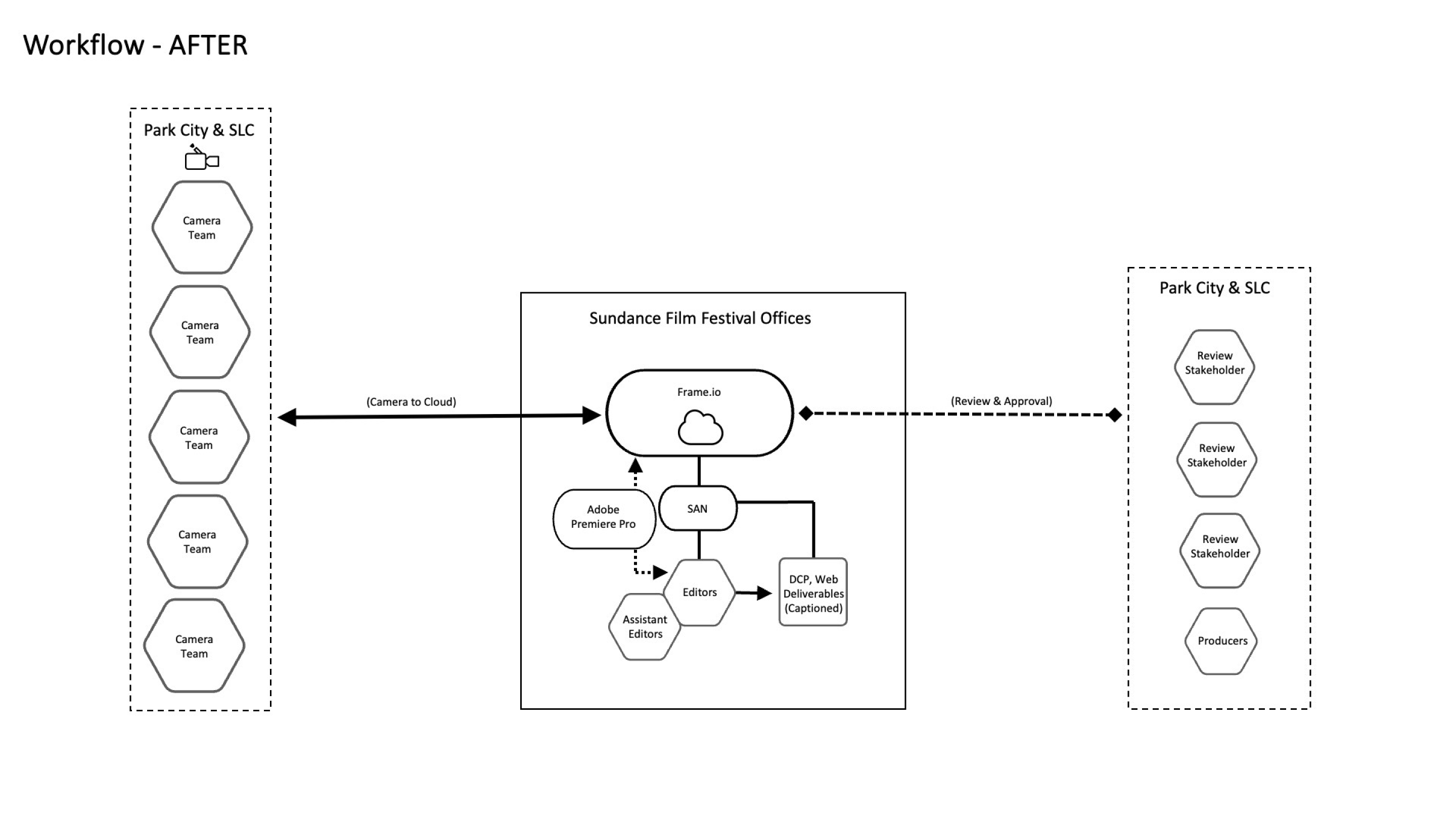Taking the Sundance Film Festival from Camera to Cloud with Adobe


86,000
Festival Attendees
Traveling to Park City, UT in 2023 with heavy traffic, challenging connectivity, and unpredictable winter weather
One Dozen
Camera Teams
Shooting non-stop content, panels, BTS, and recap videos across multiple locations
Under 24-Hour
Publish Deadlines
Video teams utilized Adobe Premiere Pro, Frame.io, and Camera to Cloud to turnaround content faster than ever before
Summary
The Sundance Film Festival is the most prestigious independent film festival in the world, where tens of thousands of people, including new and established filmmakers and distributors looking for the next big hit, converge in Park City and Salt Lake City in Utah. With unpredictable winter weather on the mountain, bumper-to-bumper traffic, and overloaded cell towers, it’s one of the most challenging places to produce video content for real-time coverage of a live event with a limited budget. The Festival required solutions that would allow an approximate 50+ person video team to shoot, edit, and publish a Daily Recap video series, multicam panels, events, and ancillary video content, posting in 24 hours or less, across multiple locations.
Adobe Premiere Pro, Camera to Cloud and Frame.io enabled Sundance Film Festival’s remote production teams to automatically upload assets directly to the cloud after each take, providing editorial teams with instant access to media in Adobe Premiere Pro. Instead of waiting for field crews to deliver cards or hard drives, the post teams were able to begin editing and provide further direction to those still shooting, assembling stories in real time. Assets were published through Frame.io to producers and stakeholders who could review and approve cuts in real time no matter where they were in Park City as well as remotely from across the country. Reviewers received notifications from Frame.io projects, and their comments on cuts flowed back into Premiere Pro for the editors.
Implementing real-time and iterative cloud workflows envisioned and predicted by the MovieLabs® 2030 Vision allowed Adobe to help the Sundance Film Festival Video Team change the way they build stories. With more time spent crafting the stories and less time spent on busywork, they were able to stretch their budget, using widely accessible tools to produce a higher volume of content faster than ever before – while maintaining their high-quality standards.



Background
The 2023 Sundance Film Festival required solutions that would allow video teams to shoot, edit, and publish a large amount of event video on a daily basis with a modest budget. These videos had strict deadlines for two reasons. First, content had to be turned around quickly in order to maximize social engagement around the Festival and satisfy the needs of virtual film festival attendees streaming content from all around the world. Second, the content served as the pre-roll for all films in the Festival both in-person and online, so deadlines were imposed to ensure the content was ready to show at the next day’s Festival screenings.
The Sundance Film Festival is a very challenging environment for video teams publishing content around the clock. With extreme traffic, stretched cell networks, harsh winter conditions, and severe overcrowding, it was extraordinarily difficult for teams spread across Park City and Salt Lake City to get footage back to video editors at the Festival content production house in time to meet deadlines, including the creation of DCPs (Digital Cinema Packages) for the next-day screenings.
Historically, video teams relied on traditional production and post workflows with runners carrying physical cards from shoot locations to Festival offices for transfer and verification. The creative teams were stuck working long, stressful hours to hit near-impossible deadlines.
Accessibility and inclusivity were also a top priority for the Festival video teams. In addition to fast turnaround times, every video from the Festival required captioning and audio descriptions, ensuring equal access to audiences of every ability. Traditionally, creating captions was a laborious and time-consuming process. Editors needed to manually type in and edit subtitles for every line of dialogue in every video. With the tight timelines faced by the Festival video teams, captioning videos could mean the difference between hitting or missing critical deadlines.
With the need for more high-quality and accessible video, it was clear that traditional production and post workflows would not cut it anymore. The Sundance Film Festival needed innovative technologies and creative tools that would allow them to accomplish
the impossible.
Figure 1: Traditional linear production workflows used by the Festival video teams prior to 2023
Solution
To address the challenges faced by the Sundance Film Festival, Adobe delivered three essential components – Adobe Premiere Pro, Camera to Cloud and Frame.io – that helped the Festival video teams shoot, edit, and deliver videos on-time throughout the hybrid Festival. The solution had three clear goals:
- Speed: By utilizing Camera to Cloud, remote camera teams across Park City and Salt Lake City were able to automatically upload, organize, and distribute every video clip directly to editors and key stakeholders after each take without ever removing a memory card from a camera. This enabled video editors back at Festival offices to complete entire drafts in Premiere Pro before camera teams finished packing their gear after a shoot.
- Collaboration: With every editorial draft uploaded to Frame.io via the Review panel integrated into Premiere Pro, producers and key stakeholders were able to leave timecode accurate comments and annotations from anywhere on the mountain, at their desk or on-the-go with the Frame.io iOS and iPad apps. Editors received feedback instantaneously right inside Adobe Premiere Pro, allowing them to quickly iterate based on the feedback and produce higher-quality work faster and with fewer drafts.
- Accessibility: Adobe Premiere Pro’s Speech to Text workflow allowed editors to prioritize creating captions for every video they published. This critical component of the workflow ensured that all viewers, no matter their ability, could enjoy the massive amount of video content being published by the Sundance Film Festival Video Teams without adding time to the post-production process. Speech to Text is an on-device function that does not require an internet connection, so teams could create transcripts quickly and securely. Before Speech to Text, creating captions for this volume of video work would have taken dozens of additional hours throughout the Festival.
With all three elements of the solution in place, video shot anywhere at the Festival went straight into one unified cloud storage location. Editors then downloaded the proxies into Adobe Premiere Pro and utilized Speech to Text locally. Edited videos were then published to reviewers and stakeholders via links to the assets in the cloud, with all comments captured directly back into Premiere Pro, allowing editors to make changes and finalize video content in an iterative and near real-time workflow. Final edits were relinked to original ProRes files as needed much later in the process since hard drives were dropped off just once a day.
Architecture
The biggest challenges to creating and executing a Camera to Cloud workflow were connectivity and trust. Anyone who has attended the Sundance Film Festival is familiar with the frustration of having little-to-no cellular service once the event is in full swing. Implementing a workflow that relies on wireless upload of time-critical assets in these conditions required that the Sundance Film Festival Video Team gain trust in the cloud. Part of this trust was gained through a partnership with Sclera Digital to implement robust mobile LTE modems designed for video teams. Part was gained through reliance on Adobe Camera to Cloud and Frame.io technology that enables immediate upload of smaller proxy files for editing and review while larger original video files follow. The rest was earned through transparency and communication between Adobe and Sundance teams – a critical component of the industry’s shift toward the MovieLabs 2030 Vision.
Camera to Cloud (C2C) is an ecosystem of C2C Connected Devices that connect the production set to Frame.io. C2C Connections are hardware devices and apps that connect directly into the Frame.io C2C ecosystem. As files upload to the cloud in the C2C workflow, they’re instantly available inside Premiere Pro.
The Sundance Film Festival Video Team used one of the hundreds of available C2C configurations: Canon C200 cameras recording ProRes, outfitted with Atomos Ninja V with Atomos Connect modules along with the Sclera Digital LTE modems to maintain strong connectivity for immediate upload of simultaneously recorded H.265 proxy files. Sclera Digital LTE modems deliver reliable on-set connectivity through reliance on multiple cellular carriers and use of high-gain antennas that prioritize data over other consumer transmissions.
Each C2C Connection allowed Festival teams to log in to their Frame.io accounts. Once logged in, they were able to select the project in which to share or upload. Through the authorization process, Frame.io was aware of the device uploading data, and routed incoming data to the connected project. As the video teams moved throughout Park City, C2C Connected Devices automatically uploaded video and audio assets to the cloud as soon as the camera cut. While Sclera modems provided excellent connectivity, if teams happened to disconnect for any reason, C2C would queue the files and upload them once an internet connection was restored.
A C2C Connected app uploads into the C2C fixed folder structure for easy and automatic organization during production. Once the files from C2C Connected Devices were in the cloud on Frame.io, they became accessible to the post-production team just like any other asset. They were then accessed and downloaded (provided the appropriate permissions were enabled) through the Premiere Pro integration. The H.265 proxy files generated by the Atomos were able to relink or conform back to their corresponding ProRes media using timecode and clip name at the very end of the process.
After creating their edits, editors uploaded cuts for review and approval through an integration with Frame.io inside Premiere Pro and received comments in real time in their sequences. Stakeholders reviewed these edits on Frame.io, which they could access on a desktop or mobile device on-the-go. As new versions became available, editors could automatically version stack new drafts and edits in the same review link for easy reference back.
Figure 2: New cloud-based non-linear production workflows used by the Sundance Film Festival Video Teams in 2023
BENEFITS
Through the instant and iterative nature of this workflow, the creative director and editors changed the way
they built stories. The speed, collaboration, and accessibility led to higher quality recaps – and audiences noticed
the improvement.
Since assets were created and uploaded instantly to the cloud, the workflow was accelerated. This meant the creatives spent less time worrying about the technical challenges and more time crafting the stories. Instead of waiting for field crew to deliver cards or hard drives, editors could begin editing and provide further direction to those still shooting – request additional b-roll or identify the need for a close up shot of a director addressing the audience to pull a cut together. Since edits were finished and distributed from inside Premiere Pro directly to Frame.io, the Sundance Film Festival stakeholders could watch and react to cuts in real time no matter where they were in Park City. They received notifications from Frame.io projects, and editors always knew they were receiving all critical input from stakeholders in the moment because comments from Frame.io appeared as markers in their sequences. This reduced the stress on editors seeking critical feedback on their timely edits.
Speech to Text streamlined the captioning workflow so more time and money could be spent on creative tasks while being certain all DCPs had accurate captions before the midnight deadline. Speech to Text leverages AI technology to automatically generate transcripts, and machine learning to position captions on the timeline so that they match the pacing and cadence of the spoken words. The appearance and style of captions could be edited in bulk and presets saved and applied to ensure consistency for every video. This eliminated the need for manual transcription and captioning, which is time-consuming, expensive, and less accurate.
With fewer logistical challenges to navigate thanks to this workflow, the Sundance Film Festival Video Team was able to redirect that energy toward creating amazing recaps to captivate local audiences, but also attract online viewers to visit the Festival in the future. And most of all, teams were able to reduce burn-out from long hours and unpredictable variables.
Alignment with MovieLabs® 2030 Vision Principles
PRINCIPLE 1
As remote production teams at the Sundance Film Festival shoot video, proxies are created simultaneously with the original video and uploaded automatically to the cloud. The cloud repository then becomes the central point for managing all subsequent versioning, processing, review, and approval of video assets, along with the associated metadata. Original camera files, too big for upload over WIFI from remote locations, are delivered to Festival offices once daily and synced to the edited and approved assets in the cloud repository, allowing the creation of fully edited DCPs.

PRINCIPLE 3
Sundance Film Festival editors begin assembling and cutting video as soon as proxies are uploaded to the cloud repository. All edits and cuts are synced to the cloud repository in near real-time. When video is ready for review and approval, producers and stakeholders around the Festival receive notifications and the video is published to them in the form of links to the assets. Comments on cuts flow directly back to the editors, who can make revisions and republish the assets for final approval. The assets never leave the control of the video editors, and as soon as they are reviewed and approved, the video is ready for sync with the original camera files and creation of DCPs for the next day’s screenings.

PRINCIPLE 10
Before introduction of the new cloud-based workflow, editors were unable to begin editing until delivery of original camera files by hand from remote shooting locations around the Festival. With the new cloud-based workflows, editors begin cutting and processing video files in near real-time as the proxies are uploaded automatically from remote locations. And when those video files are edited and ready for review, producers and executives comment on and approve the files from their phones, tablets, or laptops wherever they are located. Both the editors and approvers save valuable time and improve their Festival experience with the new near real-time cloud workflow.

PARTNERS
Partnerships play a pivotal role in the ability to connect the various cameras and devices to editorial workflows. While Camera to Cloud is supported on over 200 cameras, three distinct partners were chosen by the Sundance Film Festival Video Teams with consultation and support from teams at Adobe:
- Atomos: Remote Sundance Film Festival Video Teams utilized Canon C200 cameras as their A cam. Canon is a long-time Sustaining Sponsor of the Sundance Film Festival. To provide Camera to Cloud accessibility for each of these cameras, every production unit was given an Atomos V 5” monitor/recorder connected to an Atomos Connect module. Utilizing the C2C connection in the Atomos V/Connect devices, editorial teams at Sundance Film Festival offices were able to access every C200 clip in Adobe Premiere Pro moments after each clip was captured.
- Filmic Pro: In addition to professional A cams, production teams were also shooting B-Roll content on the most popular video camera in the world, the iPhone. Utilizing the Filmic Pro app with the Frame.io Camera to Cloud integration, cinematographers and producers were able to quickly capture pivotal moments right out of their pockets.
- Sclera Digital: As tens of thousands of Festival attendees flock to Park City, UT, cell towers easily become overwhelmed, leaving video teams with unreliable LTE/Wi-Fi. Sclera Digital offers customized, professional modems designed for video teams. These Peplink bonded dual-band 11ac Wi-Fi systems allow video teams to access multiple cellular carriers at once with much stronger antenna and special SIM cards that can prioritize data over consumer access. This was extremely important in Park City, when cellular coverage can be spotty and overloaded with an influx of visitors.
LESSONS LEARNED
Due to success in the 2023 pilot year, the Sundance Film Festival Video Team adopted this workflow again in 2024. Many lessons were learned that helped iterate the workflow further and enable the team to grow. The team learned early on to over-plan for network connectivity. It was necessary to think about the entire pipeline, anticipate gaps in coverage, and proactively fill those gaps. Supporting end-to-end network coverage for a major film festival is quite different than setting up a network on a stage; gaps have to be expected and planned for. While the Sclera modems were essential, they experienced the same challenges as any other cellular network when deep inside a building at the Festival. So when cell connection was lost, for example when shooting inside a concrete theater, the media teams had to pivot to using any WIFI available at that location. As a result, the team mapped out all available WIFI throughout the Festival and implemented a mesh network throughout Park City for the 2024 festival. No matter where the team was shooting, if WIFI was needed and available, their devices connected automatically, saving precious minutes. And for the rare occasion when no connectivity exists, a delay in upload was built into the overall plan.
There was another key lesson around the process of helping teams gain trust and understand the capabilities of new and unfamiliar cloud workflows. In addition to watching demos and collaborating closely with technologists, creative professionals need to experience cloud workflows themselves to understand the capabilities on real world projects. Providing support and letting teams discover on their own is critical to getting video teams comfortable with the new workflow while they learn to implement new ways to make even better content. In the end, the Festival team gained enough trust and experience to identify inefficiencies and think about their work in brand new ways, even planning additional quick-turn social deliverables for the next Festival.
Due to this comfort in the workflow, in 2024 the Festival team produced more complex creative content that included in-the-moment social posts multiple times per day, and immediate turnaround of major press-worthy moments from film premiers to the awards ceremony.
Sundance Institute Director of Marketing Kate Benay: “The Daily Recaps are a beloved part of the Festival experience, and Adobe’s Camera to Cloud workflow has been an invaluable tool that has enabled us to innovate in the way we capture and share the Festival with our audience. With the ability to get the footage in the hands of the editors, creative team and then myself plus key approvers quickly, we can provide near real-time coverage of all of the exciting things happening. Our community can experience the Festival with us whether they are on the ground in Utah or anywhere in the world.”
Lastly, as the Sundance Film Festival is a nonprofit, the video team was on a relatively modest budget. So, it was important to enable the team to implement the new workflows with solutions that are affordable and accessible to all creatives, even those without large budgets. In 2024, the Festival was able to produce more content with more team members on more platforms with no increase to cost.
NEXT STEPS
Adobe is committed to building workflows that allow filmmakers and content creators to work collaboratively faster than ever before. Additionally, Adobe is continuing to integrate Camera to Cloud into more devices and workflows, with new native Camera to Cloud integrations with select Fujifilm and RED digital cinema cameras. Atomos also grew their number of C2C supported devices and have implemented the ability to upload clips while recording, further decreasing downtime while waiting for clips to populate in the cloud.
The improvements to the workflows utilized by the 2023 and 2024 Sundance Film Festival Video Teams are just the beginning. With responsible innovation and deep customer engagement, Adobe is committed to empowering everyone everywhere to imagine, create, and bring any digital experience to life, aligning closely with the MovieLabs 2030 Vision.
MOVIELABS PERSPECTIVE
The Sundance Film Festival case study illustrates not just the technical benefits of migrating to a camera to cloud workflow, but also the opportunity it unlocks for workflow innovation. The team could change to a much more effective way of ingesting, creating, and reviewing content which was not bound by physical location; by doing so they reduced the stress and improved the productivity of the team and critically improved the time to market for the content. By automating previously mundane tasks like ingesting and organizing video into folders, the creative team could spend more time being creative and less time being data wranglers. We like to see these examples of how technology improvements deliver on the promise of improving efficiencies but also make teams more successful and lower the stress in the high-pressure media industry.
Get the Case Study
Download a free PDF of this case study


